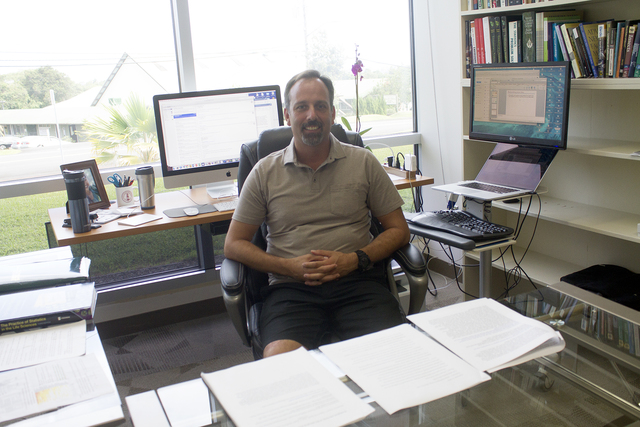New research about extinction threats to marine life points to a dire future in the world’s oceans. ADVERTISING New research about extinction threats to marine life points to a dire future in the world’s oceans. Unlike in the previous five
New research about extinction threats to marine life points to a dire future in the world’s oceans.
Unlike in the previous five mass extinction events that occurred since life on Earth began, the animals now most at risk for going extinct are large-bodied: organisms that tend to be at the top of food webs and are critical to proper ecosystem function.
Matthew Knope, assistant professor of biology at the University of Hawaii at Hilo, collaborated with lead researchers from Stanford University and co-authors from the University of Connecticut and the University of California at Santa Barbara on the work, to be published in Friday’s edition of the journal Science.
The authors began with two separate studies, one of which studied body size of marine mammals and found they were larger now than at any previous point in time, and one of which found the oceans today are “much more ecologically complex than they ever were,” Knope said.
The current study combines these data sets — which analyzed the marine fossil record going back some 540 million years — with conservation data from the International Union for the Conservation of Nature Red List. The Red List catalogs species’ extinction risk.
“The analysis allowed us to look at this relationship between the IUCN list and ecological traits, and body size,” Knope said. “Body size is (now) very strongly associated with extinction risk.”
That’s not surprising, he added.
“You think about blue whales, bluefin tuna, giant clams, Stellar’s sea cows — large animals that have been hunted,” Knope said.
Large animals, notably marine reptiles such as icthyosaurs and mosasaurs, died out before in mass extinctions, but there has never been any indication they were in particular trouble.
“Certainly, large things have been lost, but when you look across all vertebrates and mollusks … it’s been much more evenly spread, and if anything, some of the big biomass extinctions go the reverse: They take out the small things,” Knope said.
The data “really speaks to what the global pattern is,” Knope said. “What to do about it is another question.”
Actions such as President Barack Obama’s recent expansion of the Papahanaumokuakea Marine National Monument are a good start, he said, particularly for helping animals such as the Hawaiian monk seal recover in population size. Large animals tend to move around more, so small reserves are not as effective for management.
“In the recovery period from extinctions in the past, we see jumps up in diversity,” Knope said. “But the important part there is it took 20 million years to happen. Mass extinctions can be stimulating ecologically, but it’s not on a time scale that humans will ever see.”
Email Ivy Ashe at iashe@hawaiitribune-herald.com.



